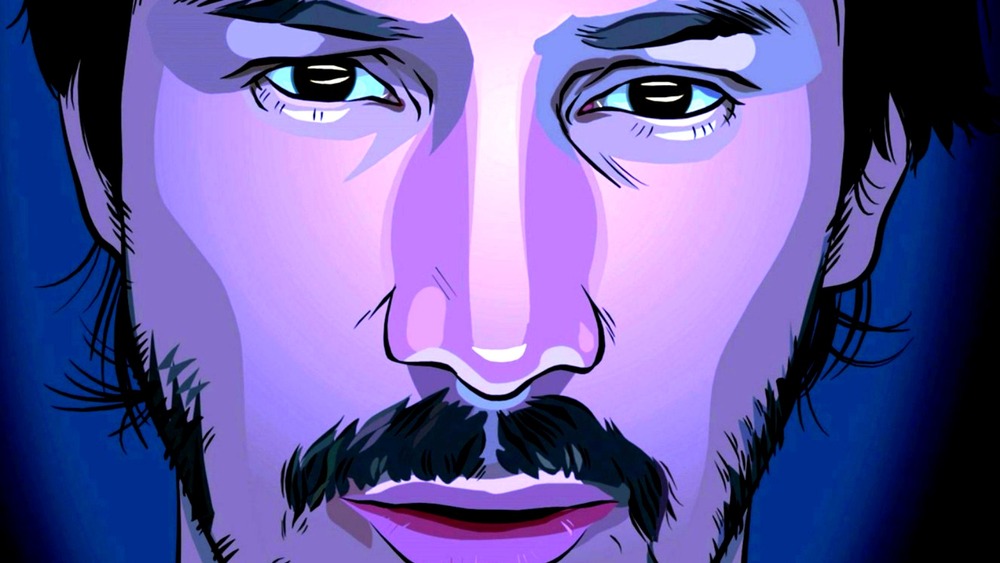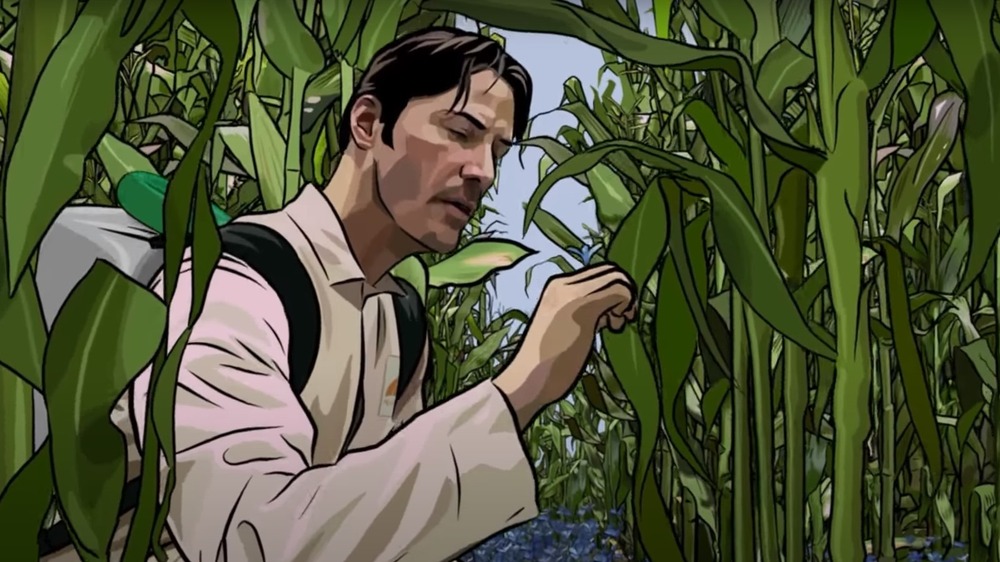The Ending Of A Scanner Darkly Explained
For a while there, Richard Linklater, the acclaimed writer/director of 2014's Boyhood, was keen on developing his own brand of animated visual weirdness via the magic of digital rotoscoping. He started with his little-known 2001 indie flick Waking Life, then found a wider audience with the deeply confusing science-fiction film A Scanner Darkly, Linklater's adaptation of the Philip K. Dick novel of the same name.
The idea was intriguing. His use of surreal visuals helped to set the tone, adding a layer of unreality to a story revolving around a sci-fi drug. That drug, as in the novel, is branded with the moniker "Substance D," leading to regrettable lines like "There are no 'weekend warriors' on the D. You're either on it, or you haven't tried it." With the benefit of hindsight, there might have been room for rewrites.
The weirdness never lets up. By the end, the main character is caught up in a cycle of drug- and rehab-based vertical integration. It's bleak.
Then again, the reality behind it wasn't exactly a feel-good story, either.
The eternal bummer of A Scanner Darkly
In the final moments of A Scanner Darkly, Bob Arctor (Keanu Reeves) is brain-damaged to the point of near-catatonia, working on a farm at a rehabilitation facility that's also responsible for the production of Substance D. The war on drugs is lost, and the postwar industrial boom is in full effect.
This ending came straight from the book, right down to the drug-producing flower being tucked into a shoe. The uncomfortable truth is that it came from a place of truth. Between the years 1960 and 1970, author Philip K. Dick produced 21 novels thanks to an ambitious regimen of amphetamines, with The Guardian outlining the writer's laundry list of psychedelic proclivities: "marijuana, mescaline, LSD, sodium pentothal and even PCP." Around 1970, he started experiencing a very Arctor-esque lifestyle, cohabitating with a revolving door of like-minded individuals. His time in an X-Kalay rehab center inspired the concept of recovery facilities as undercover drug rings. The lines between creativity and delusion start to blur around this point — as the book says, it's "strange how paranoia can link up with reality now and then." Dick would go on to believe that cults of secretive Christians were pulling society's strings and that the past two millennia were an elaborate illusion. For more on this, you can check out his 8,000-page treatise on the subject. His editors never made it all the way through.
A Scanner Darkly, as both a motion picture and a novel, is considered to be Dick's most autobiographical work, an almost Gonzo journalistic approach to science fiction. At its most cynical, it's an examination of failures and the economy of self-destruction. At its brightest and most optimistic, the cartoons sure are pretty.

